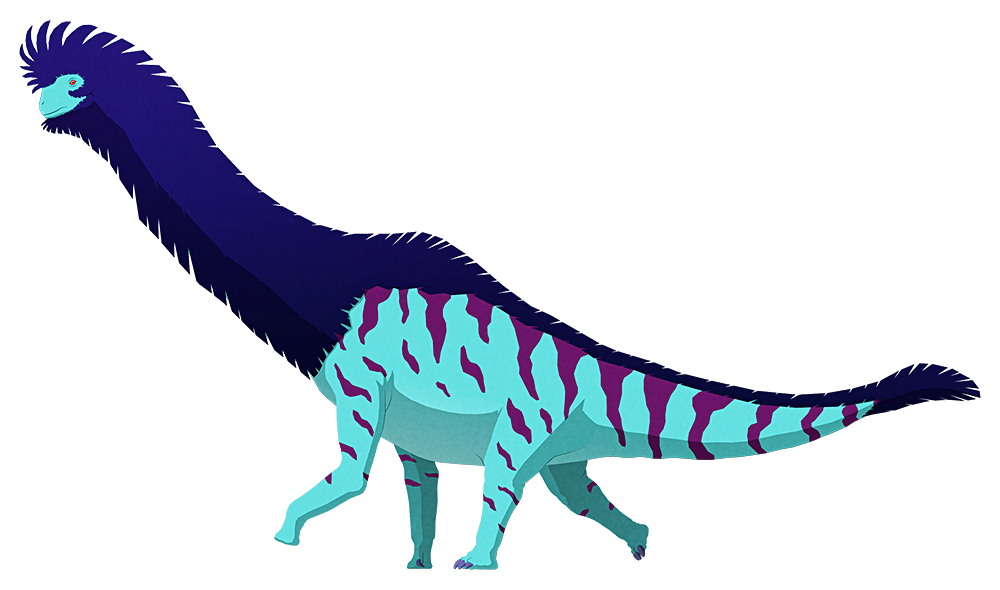Sauropod dinosaurs are mainly known for being enormous, and so even some of the smallest members of the group were actually quite large compared to modern animals.
Europasaurus was an early brachiosaurid that lived during the Late Jurassic, about 154 million years ago, on a small island in the Lower Saxony region of northwestern Germany. It was an example of insular dwarfism in a sauropod, only growing to around 6.2m in length (~20′) – less than half the size of some of its other relatives.

A layer of rock just above the deposit of Europasaurus fossils also gives us a clue about their eventual fate. Footprints of large carnivorous theropods – bigger than the mini-sauropods themselves – suggest that at some point the sea level dropped and predators from the mainland were able to reach the island.
Since there were no large predators on the island before then,the small Europasaurus had no defenses against these new giant invaders. They very likely were literally eaten into extinction.



